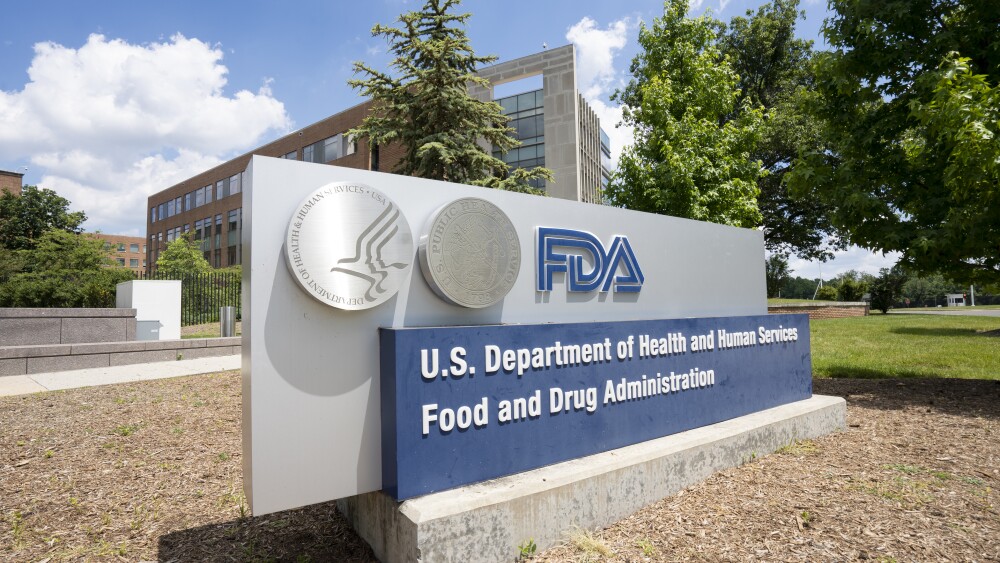As therapies for rare and neurological diseases earn accelerated approval, experts laud the program’s intent while remaining concerned about confirmatory trials and clinical efficacy, especially as products greenlit under this pathway are pulled from the market.
Last month, Pfizer’s sickle cell disease therapy Oxbryta, which won accelerated approval in 2019, was pulled from market due to risk of death and other complications, illustrating the risk of greenlighting therapeutics through this pathway.
The FDA’s accelerated approval program has helped shepherd nearly 300 new drugs to the market, providing access to these medicines an average of 3.2 years earlier than with traditional approvals, according to the industry trade group PhRMA. Focusing on five drugs approved through this program, PhRMA’s report found that “millions of patients have gained faster access to clinical benefits, gaining additional life years, years of symptom control, or disease complication-free years over standard of care.”
Having originated during the AIDS pandemic, many accelerated approvals have come in infectious disease, as well as in oncology, but the pathway has recently been leveraged by several high-profile neurological and rare disease therapeutics. Over the past five years, the FDA has granted accelerated approval to novel therapies for Alzheimer’s disease, amyotrophic lateral sclerosis (ALS), Duchenne muscular dystrophy and more.
While about half of drugs approved through this pathway, including Eisai and Biogen’s Alzheimer’s drug Leqembi and AbbVie’s ovarian cancer drug Elahere, have succeeded in securing traditional approval, Pfizer’s Oxbryta is but one example where the therapy was ultimately unsuccessful. Others include Biogen and Eisai’s first Alzheimer’s drug, Aduhelm, which Biogen discontinued in January 2024, and Takeda’s Exkivity, which was withdrawn from the lung cancer market in October 2023 after failing to meet the primary endpoint in a confirmatory study.
“The advantage of an accelerated pathway is that the FDA can potentially move drugs to help people with terrible conditions forward quickly,” Joel Perlmutter, a professor of neurology at Washington University School of Medicine in St. Louis, told BioSpace. “The downside is how they do that.”
Accelerated approval is granted on the basis of a surrogate endpoint—such as a biomarker of the disease—that is reasonably likely to predict clinical benefit. Companies are then required to conduct a confirmatory trial while the drug hits the market.
Gene therapies for rare diseases would seem to be ideal candidates for accelerated approval, given that biomarkers feature prominently in these trials, Emil Kakkis, CEO of rare disease drug developer Ultragenyx, told BioSpace. Yet the accelerated approval pathway has so far been utilized for very few rare disease gene therapies. Kakkis noted just two: Sarepta Therapeutics’ Elevidys, approved in June 2023 for Duchenne muscular dystrophy (DMD), and bluebird bio’s Skysona, greenlit in September 2022 for cerebral adrenoleukodystrophy.
Kakkis indicated he would like to see the pace pick up. In a 2011 study, he and a colleague estimated that better access to the accelerated approval pathway could greatly reduce development costs in the rare disease space, enabling development of three times as many rare disease drugs even if investment stayed flat. Moreover, Kakkis said, prioritizing primary disease activity biomarkers that measure the cause of the disease rather than clinical endpoints for approval is “a step forward in the evolution of drug development and our understanding of disease.”
“We should start defining disease as the cause of disease, not the outcomes of disease,” he said. “And if we do that, we’ll actually treat disease better. We’ll treat it before it hurts you.”
Accelerated Approval Evolves Beyond Infectious Disease and Oncology
The accelerated approval program was implemented in 1992 in response to the HIV/AIDS epidemic. During the first 10 years of the program, 65% of drugs to receive accelerated approval were for infectious diseases. The next two decades saw a multitude of cancer drugs hit the market through this pathway—between 2012 and 2021, 83% of accelerated approvals were in oncology. Now, a third era, accelerated approvals for rare and neurological diseases, appears to be dawning.
In June 2021, Biogen and Eisai’s Aduhelm won accelerated approval as the first disease-modifying treatment for Alzheimer’s disease. This was followed by BioMarin’s Voxzogo for achondroplasia in November 2021, Biogen’s Qalsody for a rare form of ALS in April 2023 and Elevidys in June 2023.
The approvals of Aduhelm and Elevidys, in particular, set off a firestorm of controversy as experts questioned the clinical benefit of these products. The subsequent market withdrawal of Aduhelm and the confirmatory trial failure of Elevidys added fuel to the fire and sparked questions about the value of the accelerated approval program. Then came Oxbryta.
Joseph Ross, a professor of medicine and public health at Yale School of Medicine, expressed concern that other FDA divisions do not appear to be heeding the hard-won learnings of the Oncology Center of Excellence.
“We are essentially being forced to relearn the lessons that the Oncology Group learned over the past 25 years,” he told BioSpace. These lessons include the need to avoid confirmatory trial delays and focus on clinical outcomes, he said.
The FDA did not respond to BioSpace’s requests for comment.
Better Understanding Biomarkers
The accelerated approval pathway primarily relies on biomarkers that may predict subsequent clinical benefit, Perlmutter said. “Therein lies the whole issue.”
Investigational medicines are traditionally considered based on their clinical benefit and risk profile, Perlmutter explained. “Using a biomarker to predict clinical benefit for both the benefit and the risk is nearly impossible.”
Current biomarkers “will give an idea of target engagement,” Perlmutter said. “It rarely tells you whether it’s safe to do so, and that almost certainly requires clinical observation.”
This is where the confirmatory trials come in. But these studies are often delayed. In 2022, NPR found that 42% of currently outstanding confirmatory studies either took more than a year to begin following an accelerated approval, or had not yet started. “Those follow-up studies are rarely done in a timely fashion,” Perlmutter noted. In the end, he added, drugs with “potentially harmful effects” and “without adequate benefits” can remain on the market. Oxbrtya was on the market for nearly five years, while Gilead Sciences’ Zydelig was available to patients with lymphoma for more than seven years before Gilead withdrew the drug in 2022 after failing to complete follow-up studies.
Ross noted that the FDA does not require surrogate markers to be validated by clinical evidence of an association between the marker and clinical outcomes. “It seems like a fool’s errand to continue to allow products to be approved on the basis of the same fallible surrogate markers over and over,” he said. “I think we need a much better sense of the surrogate markers that are being used as efficacy endpoints.”
Perlmutter offered Aduhelm, which won accelerated approval based on its ability to remove amyloid beta from the brains of patients with Alzheimer’s, as one example of a questionable biomarker. “The problem is, at that time—and actually currently—nobody [has] proved that reduction of amyloid in the brain predicts clinical benefit,” said Perlmutter, who served on the advisory committee that rejected Aduhelm and resigned as a result of its approval.
But Kakkis contends that biomarkers are more of an issue when it comes to complex diseases like Alzheimer’s and ALS. “Those situations are trickier because you can’t be sure that the biomarker is reflecting the source of disease.”
By contrast, biomarkers are a reliable surrogate endpoint in the rare, genetic disease space where they represent the underlying cause of the disease, he said. “In all cases, that’s transformed into clinical benefit down the road. It has not failed.”
Perlmutter agreed that genetic diseases where the correlation between the biomarker and the cause of disease can be proven are an appropriate use of the accelerated approval pathway. “I just think you have to prove it before you approve it,” he said.
A Worthy Regulatory Avenue
There is a perception that accelerated approval is a regulatory shortcut, but Kakkis takes issue with the idea that it is “a less important or less rigorous approval.”
“The biomarker-based approval of HIV drugs was not a compromise,” he said. “It’s far superior to doing it any other way.” He explained that it would have taken too long to run trials with clinical endpoints like opportunistic infections, hospitalizations or death with three or four combination drugs, “and too many people would have to get sick and die.”
The FDA has taken steps to dispel this shortcut notion and tighten up the program. Responding to delays in the completion of confirmatory trials, legislation passed in 2022 empowers the agency to require these studies be underway before granting accelerated approval.
But the experts who spoke with BioSpace say more changes are needed.
Concerning confirmatory trials, Ross said, “I think we need much firmer deadlines that are much shorter in nature to ensure that we have timely evidence that helps the patient and clinician community quickly understand whether the drug is truly safe and effective.”
Meanwhile, Perlmutter expressed concern about the potential for bias given that 65% of the FDA’s budget for human drugs comes from companies applying for approval. This is particularly an issue for accelerated approval “where judgment is critical and any potential bias can influence judgment,” he said. “Time is money for Big Pharma. Sooner approval means quicker onset of sales.”






